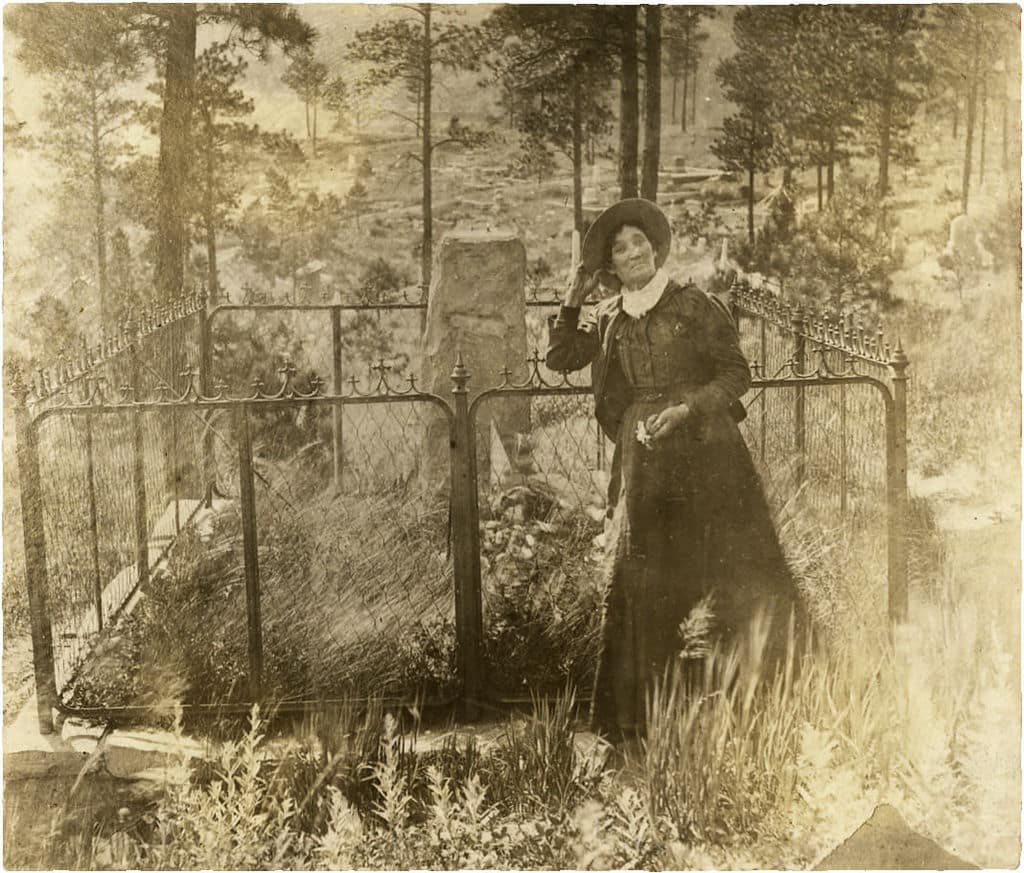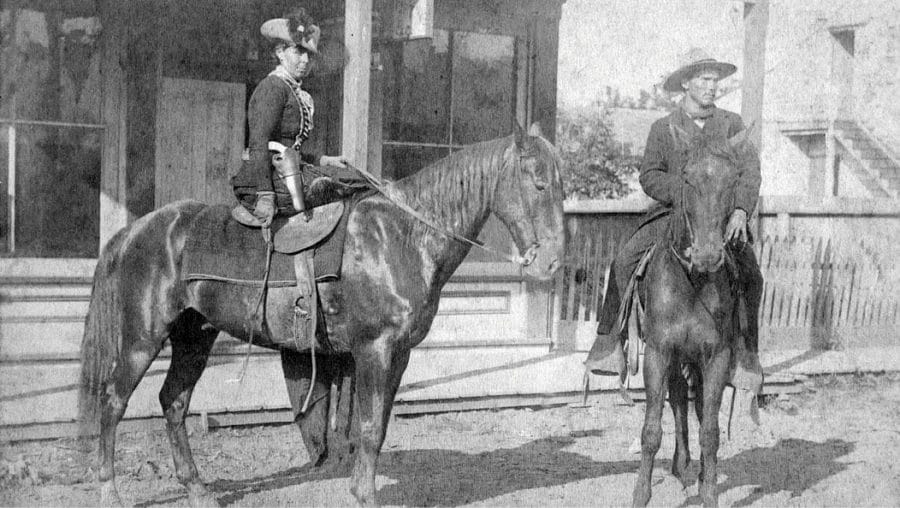“Some people think the world owes them a living—but it does not owe anyone a living—never has and never will.” — Calamity Jane’s diary entry, May 10, 1893

Famed for her sharp-shooting, cross-dressing, and whiskey-swilling habits, Calamity Jane brought uproar everywhere she went. Though she gained her reputation while working in Wild West outposts throughout South Dakota, she was born Martha Jane Canary near Princeton in Mercer County as the oldest of six children in a cash-strapped household. Around age 10, her family decided to head west via the overland route, perhaps to chase the gold rush. According to her journal entries, she spent that travel “at all times with the men when there was excitement and adventures to be had.” After reaching Montana, she considered herself “a remarkable good shot and a fearless rider for a girl of my age.”
By the time she hit 15, both her parents had died. Orphaned and with five younger siblings to support, she needed to grow up fast. Her shooting and equestrian skills, along with her tough demeanor and reportedly masculine appearance, landed unlikely work with General George Custer as a scout in Wyoming, and later on, as a rider on the mail route out of Deadwood in the Dakota Territory.
“It was considered the most dangerous route in the hills, but as my reputation as a rider and quick shot was well-known, I was molested very little,” she reportedly said.
Thanks to a sensational pamphlet that Calamity Jane published in 1901, a firsthand biography of her life exists. The problem is that she was known for stretching the truth. The most formative relationship of her life was with Wild Bill Hickok, who was shot in the head during an 1876 poker game. In her biography, she claimed to have killed Hickok’s murderer, Jack McCall.
By contrast, newspapers of the time instead reported McCall’s capture by locals. Such conflicting accounts are typical. She also claimed to save runaway wagons, nurse smallpox victims, drive oxen, and even run a mill. Rumors swirled of torrid affairs, promiscuity, fatherless children, plenty of public drunkeness, and a marriage or two, though no documents have ever surfaced to prove the allegations. Nonetheless, she embraced her public image.
“One of her weaknesses is strong drink, and profanity is another,” wrote The Rolla New Era newspaper in 1876.
In the 1890s, Calamity Jane commercialized her reputation in Buffalo Bill’s Wild West Show as a performance sharpshooter touring across America. Her top trick was to toss her hat up and shoot it twice before it landed back atop her head—all on horseback. She never drank on the job but surrendered to the bottle off-stage. By 1903, years of hard drinking finally caught up. That August, she died in the Calloway Hotel near Deadwood, South Dakota. Her death certificate blamed inflamed bowels—a common euphemism for alcoholism. She is buried next to Wild Bill Hickok at the Mount Moriah Cemetery in South Dakota.
Related Posts
Calamity Jane is Born in Princeton, Missouri: May 1, 1852
Martha Jane Cannary Burke was born in Princeton. The infamous frontier woman was known as "Calamity Jane."
Missouri History Today December 30, 1767: Chesterfield Icon Is Born
Missouri History Today December 30, 1767: Chesterfield Icon Is Born
Missouri History Today August 1, 1903: Legendary Western Figure Calamity Jane Passes Away, Leaving a Colorful Legacy
Missouri History Today August 1, 1903: Legendary Western Figure Calamity Jane Passes Away, Leaving a Colorful Legacy
7 Outlaw Women From Missouri
From the “Petticoated Terror of the Plains” Belle Starr to the fearless Bonnie Parker of America’s most notorious criminal couple, Missouri holds ties to more than its share of nefarious women.




